new posts in all blogs
Viewing: Blog Posts Tagged with: Gender/LGBTQ Diversity, Most Recent at Top [Help]
Results 1 - 4 of 4
How to use this Page
You are viewing the most recent posts tagged with the words: Gender/LGBTQ Diversity in the JacketFlap blog reader. What is a tag? Think of a tag as a keyword or category label. Tags can both help you find posts on JacketFlap.com as well as provide an easy way for you to "remember" and classify posts for later recall. Try adding a tag yourself by clicking "Add a tag" below a post's header. Scroll down through the list of Recent Posts in the left column and click on a post title that sounds interesting. You can view all posts from a specific blog by clicking the Blog name in the right column, or you can click a 'More Posts from this Blog' link in any individual post.

By:
Jalissa Corrie,
on 9/21/2016
Blog:
The Open Book
(
Login to Add to MyJacketFlap)
JacketFlap tags:
Lee & Low Likes,
Diversity, Race, and Representation,
Activities and Events,
Gender/LGBTQ Diversity,
DVpit,
writing tips,
writing advice,
Uncategorized,
writing resources,
writing contests,
Diversity,
writing,
Race,
aspiring authors,
Writer Resources,
diversity in publishing,
Diversity in YA,
Add a tag
After the success of the first #DVpit event in April, #DVpit is back for another round of Twitter pitching fun on October 5th and 6th! If you’re unfamiliar with this event, #DVpit is a Twitter pitch contest created to showcase pitches by marginalized voices and help connect them to agents and editors.
While the number of diverse books is increasing, the number of new diverse authors entering the field remains low. Significant barriers remain for authors of color, Native authors, disabled authors, and other marginalized voices. With that in mind, we are excited to share information on this special Twitter event! The information below is cross-posted with permission from literary agent Beth Phelan’s #DVpit website.
#DVpit
A Twitter Pitching Event, Hosted + Moderated by Beth Phelan
October 5, 2016: 8AM – 8PM ET for Children’s and Teen Fiction/Nonfiction
October 6, 2016: 8AM – 8PM ET for Adult Fiction/Nonfiction

What is #DVpit?
#DVpit is a Twitter event created to showcase pitches about and especially by marginalized voices. This includes (but is not limited to): Native peoples and people of color; people living and/or born/raised in underrepresented cultures and countries; disabled persons; people with illness; people on marginalized ends of the socioeconomic, cultural and/or religious spectrum; people identifying as LGBTQIA+; and more.
The first #DVpit took place on April 19, 2016 and was a national trending hashtag. There have been over 15 authors signed by agents as a direct result of this event so far, with editors from small to mid-size to Big Five publishers requesting to receive the manuscripts at submission stage.
#DVpit was covered by Bustle, Salon, YA Interrobang, and multiple blog sites like Lee & Low Blog and Daily Dahlia.
The event was created and is moderated by Beth Phelan, a literary agent at the Bent Agency.
When is the next #DVpit?
#DVpit will occur over two days. Please make sure you are pitching your work on the appropriate day; many of the agents and editors will only tune in on a specific day, to see the pitches in the categories they represent/acquire.
October 5th will be for Children’s & Teen Fiction/Nonfiction (picture books, chapter books, graphic novel, middle grade, young adult).
October 6th will be for Adult Fiction/Nonfiction (all genres, commercial and literary).
The event will run on each day from 8AM ET until 8PM ET using the hashtag #DVpit on both days.
What kind of work can you submit?
The participating agents and editors will be looking for a variety of work, including all categories of fiction for adults, teens, and children, as well as nonfiction—as long as they qualify per the description here.
Please only pitch your completed, unpublished manuscripts.
How do you submit?
The event will be broken up over two days, one for Children’s & Teen Fiction/Nonfiction (October 5) and the other for Adult Fiction/Nonfiction (October 6). Please make sure that you pitch on the appropriate day.
Your pitch must fit the 140-character max, and must also include the hashtag #DVpit.
Please try to include category and/or genre hashtags as well.
We will trust that your pitch is for a diverse book / you are a diverse author, but if you want a quick way to make the diversity in your work more apparent in your short pitch (and you can fit a few more characters), I also encourage you to include an abbreviation as an easier way to get that information across. Examples: OWN (to suggest #ownvoices), POC, LGBT, DIS (disability), IMM (immigration), etc. These codes are up to you—I’m in no place to judge or police how, or even if, you label your experience. Please remember they are optional. You will *not* be at a disadvantage if you don’t include them! If you do want to add, please make the abbreviation as clear and straightforward as possible for our agents/editors.
Please pitch no more than once per hour. You may use the same pitch, or shake things up by using different pitches for the same project. You may pitch more than one project at a time, as long as they are completed and unpublished.
Please do not tweet-pitch the agents/editors directly!
The event will run from 8:00AM ET until 8:00PM ET, so please only tweet your pitches during that block of time, on the appropriate day.
What happens next?
Agents/editors will “like” your pitch if they’d like to see material from you, so please don’t “like” other authors’ pitches. Please also do not retweet. To show support, you can always reply or quote-tweet with compliments.
Each agent/editor will have their own preferences for receiving submissions, so if you get a “like” from someone, please refer to their Twitter feed to see what they ask for, and how you can contact them.
All of these agents/editors are invested in finding more marginalized voices, so if you’re comfortable with it (and ONLY if you are comfortable with it), I encourage you to self-identify in your query, or just simply let us know that the story and/or character(s) reflect your own experience (or even in your pitch if you have the space and the inclination).
If you see that multiple agents/editors from the same company have “liked” your pitch, please contact them directly for their policy on multiple submissions, or reach out to me and I will be happy to find out for you.
Keep in mind that many agents/editors will get sidetracked with their usual work or unexpected crises and may have to revisit the feed after the event is over. So don’t be surprised if you receive “likes” after the period closes!
Our own Stacy Whitman, publisher of our Tu Books imprint, will be participating again this round. So get those pitches ready for October 5th!
If you need help with your pitch, check out these helpful resources here.
For more information, please visit the #DVpit website.

By:
rgarcia406,
on 6/25/2015
Blog:
The Open Book
(
Login to Add to MyJacketFlap)
JacketFlap tags:
YA,
Diversity,
picture books,
lgbtq,
gender neutral,
Book Lists by Topic,
Pride Month,
Gender/LGBTQ Diversity,
YA/Middle Grade,
Add a tag
June is Pride Month! Pride Month commemorates the Stonewall Riots, which happened June 1969, and was a starting  point for the Gay Rights movement. The Stonewall Inn, where the riots took place, in New York City recently gained landmark status.
point for the Gay Rights movement. The Stonewall Inn, where the riots took place, in New York City recently gained landmark status.
To celebrate, we’ve put together a list of fifteen books that celebrate different gender identities, sexual orientations, families, and ways to be!
Picture Books
Antonio’s Card by Rigoberto Gonzalez – Mother’s Day is coming up. Antonio searches for the right words to express his love for his mother, and Leslie, his mother’s partner.
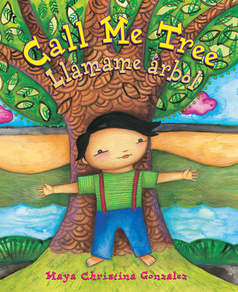 Call Me Tree by Maya Christina Gonzalez – In this completely gender-neutral story, Maya Christina Gonzalez empowers readers to reach … and be as unique and free as trees.
Call Me Tree by Maya Christina Gonzalez – In this completely gender-neutral story, Maya Christina Gonzalez empowers readers to reach … and be as unique and free as trees.
I am Jazz by Jazz Jennings and Jessica Herthel – Based on the life of transgender activist Jazz Jennings. Jazz has known she was a girl since the age of two, even if everyone around her doesn’t know it yet.
Heather Has Two Mommies by Lesléa Newman – This classic is one of the first lesbian-themed picture books. Heather is being raised by her mother, Jane and her mother’s partner, Kate.
Middle Grade
George by Alex Gino – Everyone thinks George is a boy, but George knows that she’s a girl. After her teacher announces that the class play is Charlotte’s Web, George hatches a plan with her best Kelly, so that everyone can know who she is once and for all.
Better Nate Than Ever by Tim Federle – Nate has always wanted to be in a Broadway show. But how is he supposed to make his dreams come true when he’s stuck in a small town in Pennsylvania?

Wandering Son by Takako Shimura – Shuichi Nitori and Yoshino Takatsuki are two friends at the start of puberty sharing a big secret: Shuichi is a boy who wants to be a girl and Yoshino is a girl who wants to be a boy. First graphic novel in a series.
Young Adult
Beyond Magenta: Transgender Teens Speak Out by Susan Kuklin – Six transgender and gender-neutral teens share their stories.
Ash by Malinda Lo – In this retelling of Cinderella, Ash must make a choice between fairy tale dreams and true love.
 None of the Above by I.W. Gregorio– In this debut novel, Kristen, has a seemingly ideal life. She’s just been voted homecoming queen and is a champion hurdler with a full scholarship to college. Everything unravels when Kristen and her boyfriend decide to take it to the next level, and Kristen finds out she’s intersex. Somehow her secret is leaked to the whole school.
None of the Above by I.W. Gregorio– In this debut novel, Kristen, has a seemingly ideal life. She’s just been voted homecoming queen and is a champion hurdler with a full scholarship to college. Everything unravels when Kristen and her boyfriend decide to take it to the next level, and Kristen finds out she’s intersex. Somehow her secret is leaked to the whole school.
Rainbow Boys by Alex Sanchez – Sanchez’s debut novel follows three boys, Jason Carrillo, Kyle Meeks, and Nelson Glassman, as they struggle with their sexualities and their friendships.
Books for Adults
Autobiography of My Hungers by Rigoberto Gonzalez – Rigoberto Gonzalez takes a look at his life through the lens of hunger.
Confessions of a Mask by Yukio Mishima – Kochan is unlike other men; he is homosexual. In post-war Japanese society, Kochan must keep this fact hidden under a mask of propriety.
The Color Purple by Alice Walker – This book focuses on the lives of several poor African American women in rural Georgia.
Brown Girl in the Ring by Nalo Hopkinson – The rich and privileged have left Toronto for the suburbs. Now, the people with money need bodies, so they prey upon the helpless people on the street.

By:
hannahehrlich,
on 3/25/2015
Blog:
The Open Book
(
Login to Add to MyJacketFlap)
JacketFlap tags:
Educator Resources,
diverse books,
Diversity, Race, and Representation,
Guest Blogger Post,
Diversity 102,
Gender/LGBTQ Diversity,
EqualRead,
research,
Add a tag
In this guest post, Taun M. Wright, C EO of Equal Read, lays out some of the arguments for using diverse books in all schools, regardless of student demographics.
EO of Equal Read, lays out some of the arguments for using diverse books in all schools, regardless of student demographics.
DeAvian was a disengaged student, more interested in socializing than academics. Her school had well-known books like Ramona but it wasn’t until her Big Sister gave her a book with an African-American girl on the cover that suddenly, “DeAvian’s eyes opened wide with excitement and a smile filled her face. She held the book tightly, looking up as if to say: ‘Here I am, at last!’” Now, DeAvian continues to read, and her academic performance has improved dramatically. The impact of representative literature can be profound.
In a year with so much important attention to discrimination, the call for diverse children’s books is clear. However, diverse books aren’t just essential to students from minority or marginalized backgrounds. We need diverse books in schools with students representing fewer racial groups just as much as we need them in more diverse schools.
Research shows that the less contact students have with people from other racial groups, the more likely they are to retain higher 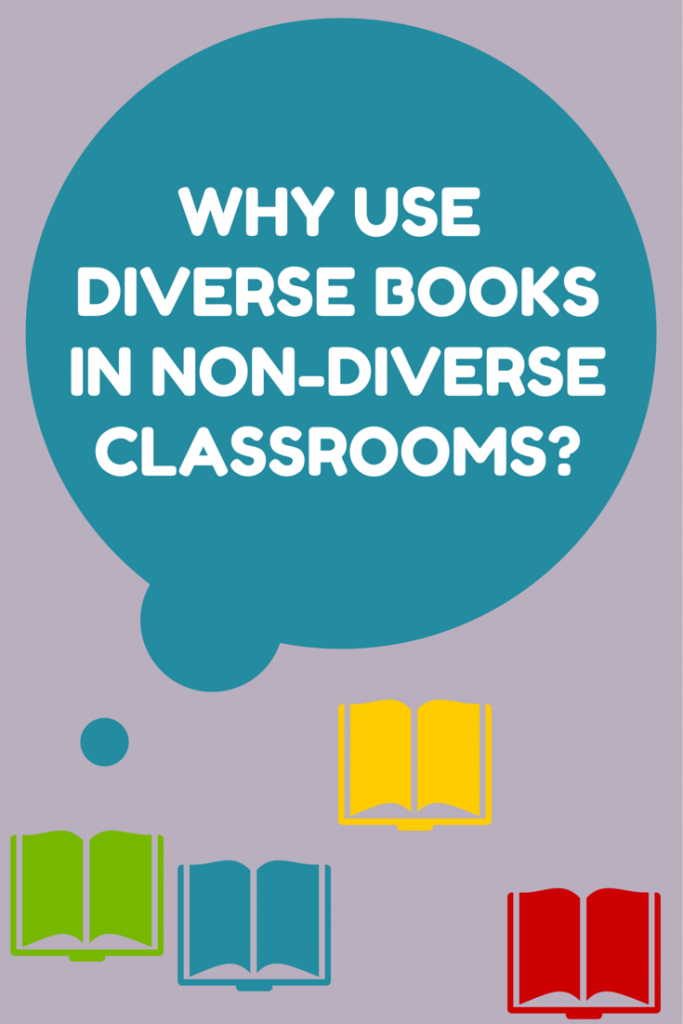 levels of prejudice. While equity and inclusion are necessary, especially for those of us too long without them, social change is more likely to happen when everyone understands how they will benefit directly from increased diversity and, what’s more, why their ability to embrace the benefits of diversity will be a key determinant of their future success. Here are a few key benefits to adding diverse books to a collection, regardless of the demographics of students:
levels of prejudice. While equity and inclusion are necessary, especially for those of us too long without them, social change is more likely to happen when everyone understands how they will benefit directly from increased diversity and, what’s more, why their ability to embrace the benefits of diversity will be a key determinant of their future success. Here are a few key benefits to adding diverse books to a collection, regardless of the demographics of students:
- INCREASED ACADEMIC PERFORMANCE: In their book Identity-Safe Classrooms, Drs. Dorothy Steele and Becki Cohn-Vargas show that “Identity-Safe Classrooms” result in increased achievement for all students, not just those from marginalized groups. Stereotype threat – anticipating being negatively stereotyped based on negative attributes associated with an identity group you represent – has a direct impact on achievement for students from all identity groups. Having many diverse books can offer a “density of cues” to counter stereotypes and reduce stereotype threat, increasing identity-safety for all students.
- ENGAGEMENT IN READING: Everyone agrees reading ability is a key predictor of future success. The key route to engaging kids in reading is to offer them books they find interesting and kids want to read about what they don’t know, not merely what they know. As part of its Classrooms program, Equal Read assesses students’ interest in diverse books, as well as their feelings of identity-safety and other measures. Students overwhelmingly answer, “I like reading about people that are different than me” and say that “books about kids that are different than the kids in my class are interesting.”*
- BETTER PROSOCIAL DEVELOPMENT: In 2012, Loris Vezalli and his colleagues demonstrated that adolescents who read a book concerning intercultural topics showed not only a reduction in stereotyping and more positive feelings about students representing identities other than their own, but also an increased desire to engage in future contact. Clearly, diverse books are a powerful tool for improved prosocial development.
- COLLEGE AND CAREER READINESS: Educators at all levels recognize the need for students to develop key “21st Century Skills.” While their lists may differ around the edges, all include collaboration and communication as essential 21st Century Skills. As the total number of Latino, African-American, and Asian students will be over 50% this fall, all students will need to be able to collaborate and communicate with people from multiple identity groups, if they are to succeed. Businesses are well aware of research that shows diverse teams are more creative, innovative, and productive than homogenous teams. Silicon Valley companies, for instance, are now investing significantly in recruitment efforts geared to diverse employees. A recent study by professors from Cornell, UC Berkeley, Washington and Vanderbilt Universities even demonstrated that “political correctness” has a positive influence on creativity. Students accustomed to respectfully collaborating and communicating with people from many different identity groups will be better prepared for college and career success.
Just because a school’s population is not very diverse, does not mean it should be similarly restricted in the books available to its students. Kids like great stories. All kids deserve to read the most engaging books available, books that expand their imagination of what’s possible by telling a wide variety of stories, featuring characters with differences beyond phenotype (observable differences) to include different ethnicities, nationalities, languages, gender expression, family structures, abilities, sexual orientations, socioeconomic backgrounds, education levels, religions and beliefs, ages, body types, learning styles, and experiences.
Through its Classrooms program, Equal Read creates broadly diverse book collections that are balanced for gender and representative of all of a classroom’s learners, offering teacher professional development and parent education about the role diverse books can play in increasing cultural competency.
Because every child deserves an equal read.
*Note: Equal Read also surveys parents and teachers, and overwhelmingly, both groups say they want to know more about diverse children’s books. Clearly, they already recognize the benefits of diverse books to the students they serve, yet it is difficult for them to find these books – this is no surprise considering how few children’s books feature diverse characters. We’re also working on ways to help parents and teachers more readily find the most outstanding books featuring diverse characters through Equal Read’s Books program.
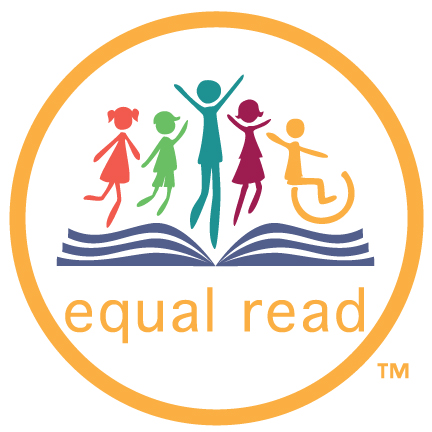 Taun Wright founded Equal Read in 2013 as a nonprofit organization to increase diversity in children’s literature, so all kids can “see themselves and a world of possibility in the books they read.” A former teacher, nonprofit consultant and administrator, and a parent and grandparent of a multi-racial family with multiple and varied abilities, nationalities, ethnicities, family structures, socio-economic backgrounds, languages, sexual orientations, ages, body types, education levels, learning styles, and experiences, she has first-hand appreciation for the wonders of different identities and the value of diverse children’s books in sharing them.
Taun Wright founded Equal Read in 2013 as a nonprofit organization to increase diversity in children’s literature, so all kids can “see themselves and a world of possibility in the books they read.” A former teacher, nonprofit consultant and administrator, and a parent and grandparent of a multi-racial family with multiple and varied abilities, nationalities, ethnicities, family structures, socio-economic backgrounds, languages, sexual orientations, ages, body types, education levels, learning styles, and experiences, she has first-hand appreciation for the wonders of different identities and the value of diverse children’s books in sharing them.

By:
hannahehrlich,
on 1/29/2015
Blog:
The Open Book
(
Login to Add to MyJacketFlap)
JacketFlap tags:
gender neutral,
Guest Blogger Post,
Diversity 102,
Gender/LGBTQ Diversity,
Call Me Tree,
LGBTQ Diversity,
New Releases,
maya christina gonzalez,
Educator Resources,
Add a tag
 Maya Christina Gonzalez is an award
Maya Christina Gonzalez is an award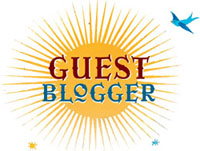 -winning author and illustrator. In this post, cross-posted from her website, Maya shares why she decided to make her new picture book, Call Me Tree/ Llámame árbol, completely gender neutral.
-winning author and illustrator. In this post, cross-posted from her website, Maya shares why she decided to make her new picture book, Call Me Tree/ Llámame árbol, completely gender neutral.
You may or may not notice something different about my new book, Call Me Tree. Nowhere in the story are boy/girl pronouns used. No ‘he’ or ‘she’ anywhere! I found it easy to write this way because that’s how I think of kids, as kids, not boy kids or girl kids.
I even requested that no ‘he’ or ‘she’ be used anywhere else in the book, like on the end pages or the back cover when talking about the story. I also asked the publisher to only refer to the main character as a child or kid when they talked about my book out in the world. Because I wanted Call Me Tree to be gender free!
Why? I’m glad you asked. Two reasons come to the top of my mind:
First, I know a lot of people. Some don’t feel that they fit into the boy or the girl box and of course, some do! By not using ‘he’ or ‘she,’ I could include everyone! This is very important to me. I want everyone to know that we all belong!
And second, I thought it would be a great opportunity to talk about the main character in Call Me Tree. Let’s call them ‘Tree.’ Tree is like a lot of people I know, including my own kids! Strong, curious, free! Now, if you were going to guess if Tree is a ‘he’ or a ‘she,’ which do you think?
I’m going to guess you’d say ‘he’ first, maybe because Tree’s already been called ‘he’ by folks who have given Call Me Tree some really awesome reviews. Tree could be he, but maybe not! A lot of times we make guesses based on what we think is true, but sometimes that can leave people out.
Tree’s reminding us there are lots of different ways to be!
I just remembered another top reason.
People who don’t fit into the boy or the girl box get teased more than anybody. This is extra not cool to me. I happen to know all kids rock, so I want to make sure the ones that get picked on the most know they rock! Right?!

So Call Me Tree is gender free! Because all trees belong!
Try it on for a day. Play with not being called ‘he’ or ‘she,’ but only Tree, tall and strong! Just for one day, or even one afternoon. Would anything feel different? Would you be different?
Let’s call it Tree Day.
Let’s all be free. Let’s all be trees!
Whatdya think?
Call me Tree!
Love, mayatree
When sharing this book, you may want to include that it’s gender free as part of the conversation in your classroom, library or home if:
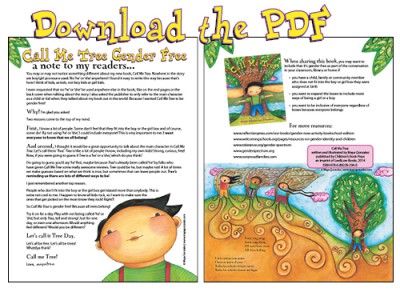
- you have a child, family or community member who does not fit into the boy or girl box they were assigned at birth
- you want to expand the boxes to include more ways of being a girl or a boy
- you want to be inclusive of everyone regardless of boxes because everyone belongs
Purchase a copy of Call Me Tree/ Llámame árbol
For more resources:
www.reflectionpress.com/our-books/gender-now-activity-bookschool-edition
www.welcomingschools.org/pages/resources-on-gender-identity-and-children
www.tolerance.org/gender-spectrum
www.genderspectrum.org
www.outproudfamilies.com




 point for the Gay Rights movement. The Stonewall Inn, where the riots took place, in New York City recently
point for the Gay Rights movement. The Stonewall Inn, where the riots took place, in New York City recently 

 None of the Above
None of the Above 

 Maya Christina Gonzalez is an award
Maya Christina Gonzalez is an award
